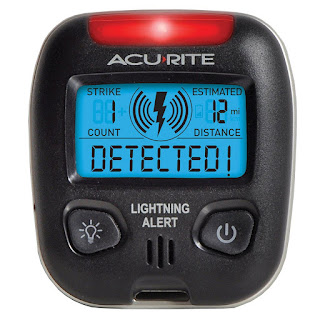Posts Tagged ‘Weather’
 German Teletype (RTTY) Weather on HF (Shortwave) Radio
German Teletype (RTTY) Weather on HF (Shortwave) Radio
This is a video of the German Weather Broadcast from DWD, Hamburg, on shortwave (HF), using teletype (RTTY). I demonstrate two decoding software options: JWcomm32 (older), and, FLdigi. Note the in FLdigi, the “Reverse” feather is selected to properly decode the signal (in either USB or LSB, you still need to select, “Reverse”).
The radio used to receive these weather bulletins is an Icom IC-7610, using an antenna designed for 160 Meters.
RTTY is a system for broadcasting text over radio. The technology dates back to the late 1950s and seems somewhat anachronistic. Speeds are slow, even slower than NAVTEX. A similar service is the USCG service, SITOR (Simplex Teletype Over Radio) providing offshore and coastal forecasts over very wide and remote areas from the tropics to the polar regions.
There is dedicated equipment to receive RTTY and SITOR but we can receive both using a standard HF/SSB receiver with software packages such as TRUETTY and SEATTY to decode the signals.
The main advantage of RTTY/SITOR is the reception of information over an entire ocean area. The USCG also shares frequencies across multiple transmitters according to a schedule, rather like NAVTEX. The system is available over the Atlantic and Pacific including polar regions not served. For more about SITOR see the Monitoring Times link or the USCG site.
Around Western Europe and the Mediterranean, the Deutscher Wetterdienst (DWD) , the German Weather Service has accepted the responsibility to broadcast weather information for mariners on RTTY. Frequencies are in the table on the webpage at:
https://weather.mailasail.com/Franks-Weather/Radio-Teletype-Weather-Broadcasts
This video captures the RTTY transmission on 14467.3 kHz (with adjustment in the passband to center on Mark and Space as seen in the video).
DWD (Hamburg) Broadcast Content:
Some broadcasts are of raw weather observations in a WMO coded form. Otherwise, for the broadcasts include,
- Strong wind, gale and storm warnings for German Bight, Western and Southern Baltic Sea, German North Sea and Baltic Sea coast
- Weather forecast for the North Sea and Baltic Sea, Weather situation, forecast valid for 12 hours and outlook valid for another 12 hours
- Weather report German North Sea and Baltic Sea coast, Weather situation and forecast valid for 12 hours.
- Navigational warnings for North Sea, Baltic Sea and German coast
- Weather report Norwegian Sea and Baltic Sea Route North Cape – Shetlands, The Quark – Gulf of Finland. Weather situation and time series forecast for 2 days
- Weather report North Atlantic. Route Pentlands – Southwest Greenland. Weather situation and time series forecast for 2 days
- Station reports North Sea and Baltic Sea
- Weather report Western European Sea. Route Southern Ireland – Area Canarias. Weather situation and time series forecast for 2 days
- Medium range weather report North Sea, Weather situation and time series forecast for 5 days
- For the Mediterranean there are Station reports Mediterranean Sea
- Weather report Mediterranean Sea (in German), Weather situation and forecast valid for 24 hours.
- Alborán – Tunis. Weather situation and time series forecast for 2 days
- Weather report Eastern Mediterranean Sea (in German). Route Eastern Tunis – Rhodes/Cyprus. Weather situation and time series forecast for 2 days
- Medium range weather report Mediterranean Sea (in English), Weather situation and time series forecast for 5 days
- Around the North Sea and the Baltic this service is a useful supplement to NAVTEX. Particularly so are the 5 day outlooks, These give wind forecast every 12 hours for the 5 day period. The values are straight from the DWD NWP model at a few grid points although these are sufficient to give an overall view and much quicker to receive than synoptic charts on radio fax.
In the Mediterranean, most valuable is the 5 day forecast which seems to be used and very highly regarded by the majority of serious cruising yachtsmen. It is a most valuable service for predicting the major strong wind systems such as Mistrals, Libeccios, Tramontanes, etc. Such winds are usually well predicted 4 and often 5 days ahead. Conversely, I have never found the 24 hour forecast to be much use. For this period, the French, Spanish and even the Italian NAVTEX broadcasts are to be preferred.
 Marine Radiofax Weather Charts Via Shortwave Radio – WEFAX
Marine Radiofax Weather Charts Via Shortwave Radio – WEFAX
Weather out over oceans? That, and more.
More than international broadcast stations and amateur radio operators exist on the shortwave radio spectrum. For instance, any non-broadcast signal that is not amateur radio is often lumped together into a category known as Utility Radio, abbreviated, UTE. To dig deeper into UTE activity, you could check out the UDXF – the Utility DX Forum, located here: https://www.udxf.nl/
Utility stations (UTE) are quite common, from marine (ships, fishing vessels, etc.), transoceanic air traffic (international passenger or cargo jets and other aeronautical trans-oceanic radio traffic), to military radio (weather, coordination, and much more). UTE is a rich subdomain of the radio experience.
As an amateur radio operator, I listen to and monitor utility stations on shortwave, at times when not operating as an amateur radio station. I check weather for air traffic or for marine traffic, because it helps me see the larger-scale weather patterns.
Here is a video I made of my reception of weather charts via shortwave radio from radio station NMC, at Point Reyes, CA, using FLdigi software to receive these weather fax transmissions:
WEFAX 22.527 MHz on 2024 JUNE 14
[embedyt] https://www.youtube.com/watch?v=9N66y9HFX_Q[/embedyt]
This video is a screen and sound capture of my reception of weather charts and images by shortwave radio, from a station in California running about 4 kilowatts of RF power. This HF WEFAX (Weather Facsimile) service is on every day for ship (marine) weather dissemination so that ships out on the ocean can get weather charts and images not by satellite, but by receiving shortwave signals.
Below is a snippet from the published schedule from Point Reyes WEFAX Radio, callsign NMC, as follows:
22527 kHz – tune offset 1.9 kHz (see note, below)
UTC WHICH CHART ----- -------------------------------- 19:13 TROPICAL GOES IR SATELLITE IMAGE 19:23 WIND / WAVE ANALYSIS 19:33 96HR SURFACE FORECAST 19:43 96HR WIND/WAVE FORECAST 19:53 96HR 500MB FORECAST 20:03 96HR WAVE PERIOD / DIRECTION -------------------------------------
The above snippet of the NMC chart transmission list is from the page, “NMC Point Reyes, Marine Radiofax Broadcast Schedule” found at:
https://weatherfax.com/nmc-point-reyes/
Here is a detailed description of the weather charts, and online access is at:
https://www.weather.gov/marine/radiofax_charts
Note: In the video, you see that I am tuned to 22.526 USB thus I was tuned to 22526 kHz USB, based on this: “Unless otherwise stated, assigned frequencies are shown, for carrier frequency subtract 1.9 kHz. Typically dedicated radiofax receivers use assigned frequencies, while receivers or transceivers, connected to external recorders or PC’s, are operated in the upper sideband (USB) mode using carrier frequencies.”
==================================
Source:
WORLDWIDE MARINE RADIOFACSIMILE
BROADCAST SCHEDULES
U.S. DEPARTMENT OF COMMERCE
NATIONAL OCEANIC and ATMOSPHERIC ADMINISTRATION
NATIONAL WEATHER SERVICE
April 12, 2024
https://www.weather.gov/media/marine/rfax.pdf
 Yet in Quarantine, Life Blossoms!
Yet in Quarantine, Life Blossoms!
About a month ago, I asked,
“What is going on with you during this challenging situation?” and, “How do you use amateur radio, now that we are all stuck at home? Are you using ham radio more, now? Less?“
I am moved to say, “Thank you, to each of you who commented and even those who made a video response. I sure appreciate it!“
During that video blog (or, Vlog), back a month ago (link: Chat From a Quarantined Software Engineer – Welfare Check!), I mentioned my need for dental surgery.
I did have to have the tooth removed. It was completely split down the middle (top to bottom), down to the root. There was no justifiable way to save the tooth.
I now am missing two bottom back-most teeth, and one bottom, back-most tooth. I can report that I have healed up nicely. I am starting to enjoy a hamburger or two.
Through all of this, I’ve still been working. Also, I’ve been involved with a LOT more ham radio–especially with Morse code activities.
How has the last month treated you? After watching this new video (below), please leave a comment or two, or three; let hear from you, okay?
More than anything, please leave a comment to let me know how you are doing. I hope to hear from you.
Here’s the video:
[embedyt]https://www.youtube.com/watch?v=vFGbw7d91GA[/embedyt]
73 de NW7US dit dit
 If you don’t like the weather in NJ
If you don’t like the weather in NJ
I've been keeping an eye on the long range weather forecast via WeatherUnderground for this coming Saturday - FYBO day.
A couple of days ago, they were calling for a wet weekend. This morning, they were calling for an ice storm in the morning with some showers in the afternoon after a warm up.
NOW it's supposed to be "just" a cloudy day with just a chance of showers. Meanwhile, last night on the news, the local weather prognosticator was calling for a possible Nor'Easter this weekend. It's enough to make your head spin!
 Another D Day Special Event
Another D Day Special Event
 Travel Footage: 3Y0Z Antarctic Bouvet Island DXpedition 2018 Expedition (by EY8MM)
Travel Footage: 3Y0Z Antarctic Bouvet Island DXpedition 2018 Expedition (by EY8MM)
Here is video footage of the journey to Antarctic Bouvet Island, made by the 3Y0Z amateur ham radio team. This footage caught a few moments on the deck of M/V Betanzos.
As you can see in the last moments of this footage, the weather conditions contributed to the decision to abort the DXpedition, as it was far too dangerous to continue this expedition.
As reported by ARRL:
“Our captain has decided that it is in the best interest of safety and expediency to proceed directly to Capetown, South Africa, rather than Punta Arenas, Chile. We are now heading north to avoid the possibility of encountering ice. Currently, there is no ice in sight or on radar. In due time, we will head easterly toward Capetown. Our entire team is safe. Most are resting in their bunks and in good spirits. We will keep the amateur radio community and our families informed, as we continue our journey.”
In a huge disappointment for the DX community and the members of the 3Y0Z Bouvet Island team, the DXpedition’s leaders announced at 2000 UTC today (February 3) that a decision had been made to abort the DXpedition and head back to Chile.
“During the last 72 hours, we continued to experience the high winds, low clouds, fog and rough seas that have prevented helicopter operations since our arrival at Bouvet,” said an announcement on the 3Y0Z Bouvet Island website. “No improvement was predicted in the weather forecast for the next 4 days. Then, last night, an issue developed in one of the ship’s engines. This morning, the captain of the vessel declared it unsafe to continue with our project and aborted the DXpedition. We are now on our long voyage back to Punta Arenas. As you might imagine, the team is deeply disappointed, but safe. There is already talk about rescheduling the DXpedition.”
Bouvet Island currently is the third most-wanted DXCC entity, behind Kosovo and North Korea. The 3Y0Z DXpedition, comprised of top operators with considerable DXpedition experience, has been in the planning stages for 2 years and had attracted contributions from clubs and individuals around the world.
A dependency of Norway, Bouvet is a subantarctic island in the South Atlantic. The last Bouvet activation was 3Y0E, during a scientific expedition over the winter of 2007-2008.
Video Author: Nodir Tursun Zade, EY8MM
This copy is used BY PERMISSION from EY8MM, given in writing on 23 February 2018
 It’s been a long, long time.
It’s been a long, long time.
There are two of us in my department. Things were easier in Warren, as we both worked from the same (and only) building on campus. We staggered our lunch breaks so that one of us was always on duty. Here, at the new work QTH, we are split between two buildings, each one of us minding our own store, so to speak. Unless you master bi-location, you can't manage both buildings at the same time with one man.
That led towards a hiatus in lunchtime QRP operations as it just seemed not the greatest idea to spend so much time away from the desk. I know, it's time I'm entitled to (it's only an hour) and I really should get away from the desk to remain fresh in the afternoon.
So I decided to take advantage again, beginning this week.
I went out to the car yesterday and hooked up the KX3 to the Buddistick. I heard a lot of stations on 20 Meters, but got no answers to any of my calls. I know the equipment works, I figured it was just a bit of "rust" on my part. But, boy howdy, was it hot yesterday! It reached into the upper 80s (about 30C) here at lunchtime and since I was parked outside, it was hot like an oven in the car. It was a double negative experience - too hot and skunked on contacts.
Not one to be deterred, my little eye spied on something that I had forgotten. This campus has picnic tables! Many of the employees go out to eat outdoors on the nice days. There are plenty of tables, they are spaced widely enough apart where conversations cannot encroach on one another.
It dawned on me that this would be the perfect place to set up the KX3 and the magloop! Sure, I'd probably get some stares from the other lunchers, and maybe from some of the employees who take advantage of their lunch break to walk the perimeter of the campus - but what they heck? Right? It's not like I haven't been stared at before. It's not like people haven't come up to me to ask, "What is that?" before, so tossing self-consciousness into the wind, I decided to set up at one of the tables today.
I chose a table towards the end of the line of tables, the one with no umbrella. Sure, it would be a little hotter with no shade, but it's less than an hour and besides, there's be no metallic umbrella ribs to possibly interact with the magloop.
Before hunting for a QSO, I decided to call CQ for a bit on both 20 and 17 Meters. I really didn't expect anyone to answer, although there's no reason why anyone wouldn't. I just wanted to conduct a little Reverse Beacon Network experiment.
Experiment done, I went back to 20 Meters and found the "sweet spot" with the loop's tuning capacitor. (I was able to set up in under four minutes, by they way. Almost as fast as setting up the Buddistick on the car.) Tuning the KX3 around, there were a bunch of loud stations. Finally, I came upon GI4DOH, Rich in Northern Ireland. He had a strong signal and a great fist, so I gave him a call. He came back to me on the first shot! He was 559+ here in NJ, and I got a 559 in return.
According to his QRZ page, the loop that Rich is using is a receive only loop. This was not a loop to loop QSO.
After working Rich, I popped on up to 17 Meters. There I heard OE3DXA, Wern in Austria calling CQ. Again, loud signal, great fist, so I gave him a call. Just as with GI4DOH, I gave him a 599+ report but this time I got a 599 in return. Both QSOs were solid with no repeats asked for with regard to info, so I am assuming I was at or near Q5 copy. (Even if the 599 in return wasn't exactly accurate.)
It was time to pack it in, and I was satisfied with the two DX QSOs for the day. With regard to my Reverse Beacon Network experiment, this was where the loop was allowing my signal to be heard:
As for spectators, I did get one guy who stopped to ask, "What is that? And what are you doing?" I explained that it was Amateur Radio and an Amateur Radio antenna. In response, I got the (what seems to be standard) "People still do that?" question.
I went into "pitch" mode and explained that yes, Amateur Radio is alive and well, and that for a lot of people in the Caribbean right now it's the only way they can get word out to their families abroad, that they are OK after the hurricanes.
So it was a successful day, I'm happy and it looks like there might not be rain for the rest of the work week.
72 de Larry W2LJ
QRP - When you care to send the very least!


















